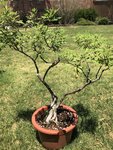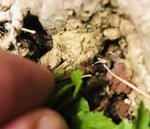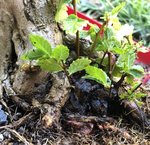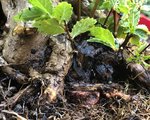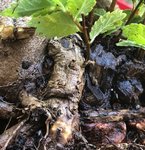The roots may be completely entangled, but elm and vitex are so far apart genetically that I don't think a true graft is possible. It seems there are three choices.
1. Keep all of the foliage of one or the other cut off all the time. Eventually the plant with no foliage will die, but it might take a long time.
2. During the dormant season, bare-root the whole thing and separate the two root systems. Tedious and possibly fatal to one or both.
3. Let the elm sprouts grow and try to develop a two-species composition. This would be horticulturally and aesthetically difficult, but it would be unique! One species would need to be visually dominant, the obvious choice would be the vitex since it is already so much larger. Maybe the smaller trunk of the vitex is cut off, and the elm trained to take its place. Or both trunks of the vitex remain and the elm sprouts form a thicket underneath its canopy. This sort of thing does happen in nature ocasionally.



